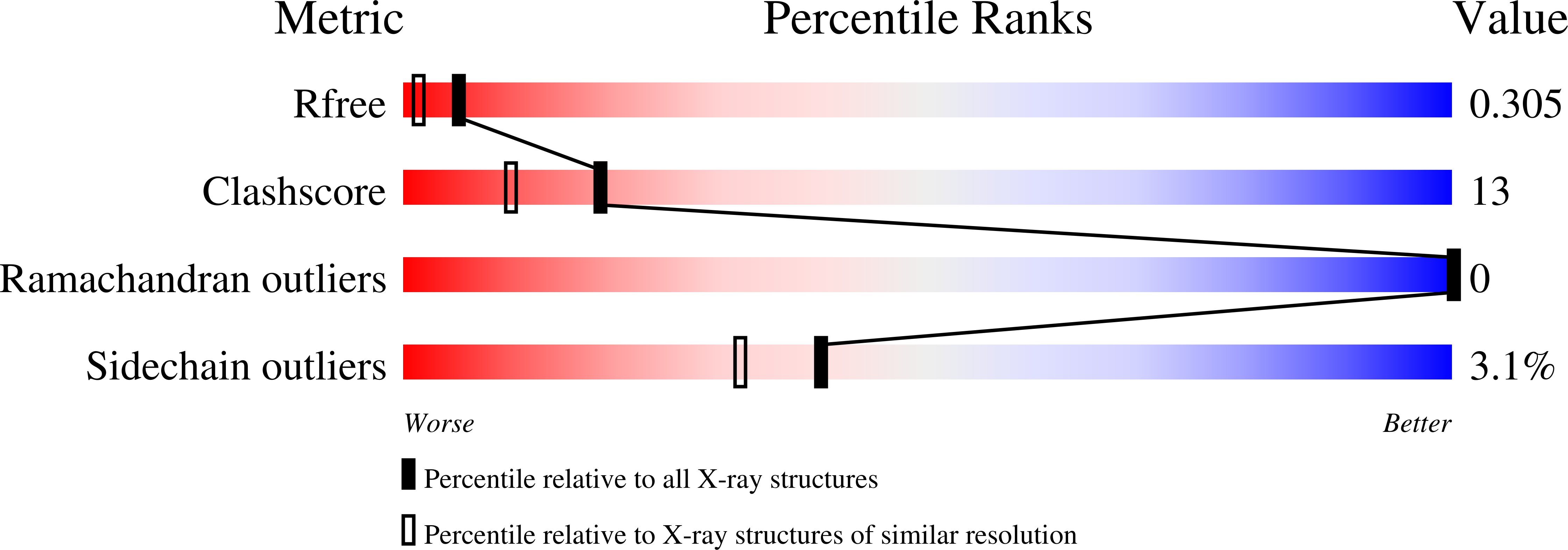A C-terminal phosphatase module conserved in vertebrate CMP-sialic acid synthetases provides a tetramerization interface for the physiologically active enzyme.
Oschlies, M., Dickmanns, A., Haselhorst, T., Schaper, W., Stummeyer, K., Tiralongo, J., Weinhold, B., Gerardy-Schahn, R., von Itzstein, M., Ficner, R., Munster-Kuhnel, A.K.(2009) J Mol Biol 393: 83-97
- PubMed: 19666032
- DOI: https://doi.org/10.1016/j.jmb.2009.08.003
- Primary Citation of Related Structures:
3EWI - PubMed Abstract:
The biosynthesis of sialic acid-containing glycoconjugates is crucial for the development of vertebrate life. Cytidine monophosphate-sialic acid synthetase (CSS) catalyzes the metabolic activation of sialic acids. In vertebrates, the enzyme is chimeric, with the N-terminal domain harboring the synthetase activity. The function of the highly conserved C-terminal domain (CSS-CT) is unknown. To shed light on its biological function, we solved the X-ray structure of murine CSS-CT to 1.9 A resolution. CSS-CT is a stable shamrock-like tetramer that superimposes well with phosphatases of the haloacid dehalogenase superfamily. However, a region found exclusively in vertebrate CSS-CT appears to block the active-site entrance. Accordingly, no phosphatase activity was observed in vitro, which points toward a nonenzymatic function of CSS-CT. A computational three-dimensional model of full-length CSS, in combination with in vitro oligomerization studies, provides evidence that CSS-CT serves as a platform for the quaternary organization governing the kinetic properties of the physiologically active enzyme as demonstrated in kinetic studies.
Organizational Affiliation:
Institut für Zelluläre Chemie, Medizinische Hochschule Hannover, Carl-Neuberg-Strasse 1, 30625 Hannover, Germany.














